Find The Best Amazon FBA Suppliers With This Method
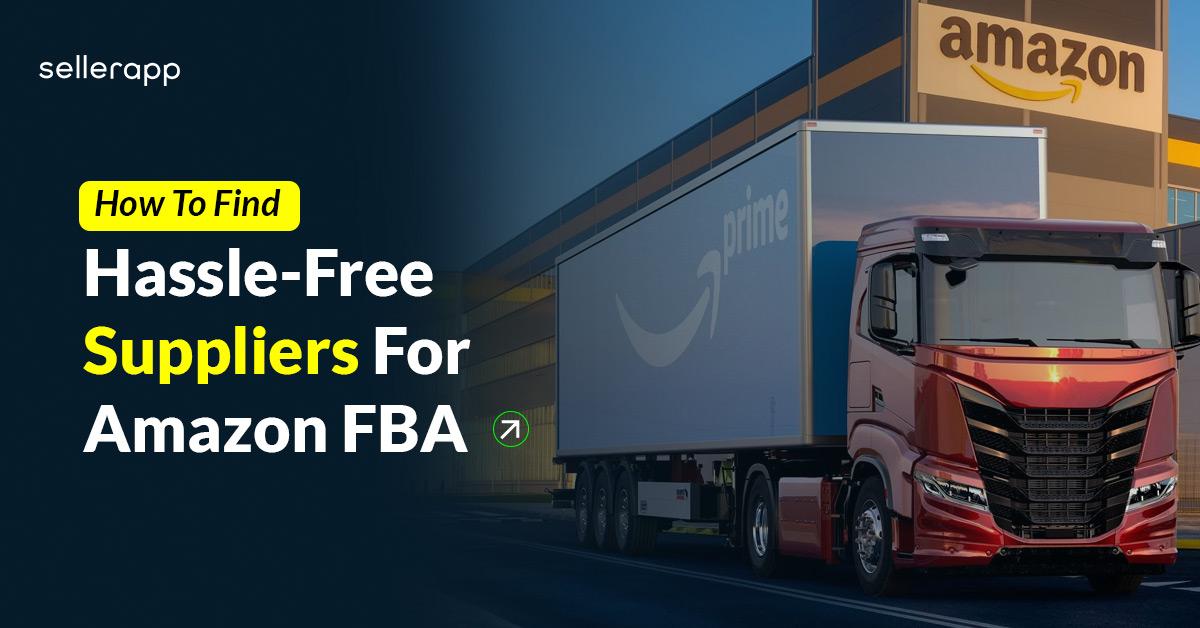
So, you’ve got this killer product to sell on Amazon, but the job isn’t done yet!
Now, you gotta find a supplier who’s up for shipping your goods at a fair price. And hey, the product has to be top-notch for the Amazon Marketplace too.
Now, where do you find the right supplier?
Do you go all the way to China like many Amazon sellers, or do you check out local manufacturers? Each way has its pros, and you gotta find the one that suits you best.
Good news – with SellerApp’s product sourcing tool, you can choose from the top-notch manufacturers and find the perfect fit for your business.
Let’s dive into the nitty-gritty of Amazon FBA suppliers, the best ones to work with, and how to find the right folks for your Amazon business.
Let’s go!
Quick Guide:
- Finding the best suppliers for Amazon FBA in China
- Your FBA supplier checklist
- Double-check your supplier
- Assess product quality and safety standards
- Find out how the product is made
- Ask for prototypes
- Figure out the logistics
- Diversify your search
- Shipping directly to fulfillment centers
- Shipping to yourself or a middleman
- Local or overseas suppliers for Amazon?
- Conclusion
Finding the best suppliers for Amazon FBA
Let’s first talk about the Dragon in the room!
China is the undisputed manufacturing hub of the world. Chances are, most things you purchase were either assembled or manufactured in the country. So why is China a popular spot for Amazon sellers to find suppliers? The simple answer is that it is cheaper. Low overhead costs help Chinese companies bring down manufacturing costs, making it almost impossible for other countries to compete.
Competitive pricing is one of the key aspects to staying relevant on e-commerce platforms like Amazon. Sellers need to make sure they are getting their products at the lowest possible price. In most cases, that means tying up with Chinese manufacturers or suppliers. Sourcing from China is not the only way to be competitive though! So how do you find the best suppliers for Amazon FBA?
- Online marketplaces
Platforms like Alibaba And Aliexpress are a goldmine for potential Amazon sellers. However, they are not very easy to navigate. If you’re trying to source from Alibaba, you’re very likely to buy from the manufacturer directly. Buying directly from a manufacturer often means a cheaper price per product. However, most manufacturers will only take large orders.
If you can’t find what you’re looking for on Alibaba or Aliexpress, it’s also worth checking out B2B e-commerce platforms like Made-in-China, Global Sources, or JimTrade. These third-party B2B e-commerce platforms focus on foreign trade and are great to source your product from.
- Trade shows
Trade shows are a great way for a seller to get directly in touch with suppliers. Talking to a supplier face-to-face will help you understand their company values, products, and the quality control measures they have in place. The sheer number of manufacturers and suppliers at trade shows will ensure you have plenty of choices. You don’t necessarily need to go to China to attend trade fairs either. While taking your search to China will help you get in touch with more potential Chinese suppliers, many also set up shop in trade fairs across the world.
Before you make your way to a trade fair, make sure you do your research. You need to know exactly what you’re looking for when attending these events. Having a solid plan will ensure you don’t get distracted by the plethora of choices.
- Product Sourcing Agencies
If you’re having trouble finding the right supplier, you can also get in touch with product sourcing agencies. These third-party services will help you find suppliers and import the products at a low cost. Sourcing agencies are also a way for ensuring quality control.
This is the easiest way to find an overseas supplier, especially in South Asia or China, but it doesn’t come free. The extra commission that you pay a sourcing agency might make the difference when competing on Amazon, especially when your competitors are also trying to optimize and reduce their costs. Moreover, sourcing agencies usually never share the details of their manufacturer or supplier.
Now that you know how to get in touch with your supplier, you need to make sure they are the right one for you. There are some things you cannot leave to chance, and you need to make sure your suppliers are trustworthy. How do you do that?
Your FBA supplier checklist
Product price is not the only factor you should be considering when looking for the right supplier. You also need to consider the quality of the product and the efficiency of the supplier. Don’t forget your freight costs either. Sometimes a local supplier might just end up being cheaper when you consider the overhead costs like shipping, packaging, taxes, and customs clearance. So what are the things you need to keep in mind while picking your supplier? Here’s a handy supplier checklist:
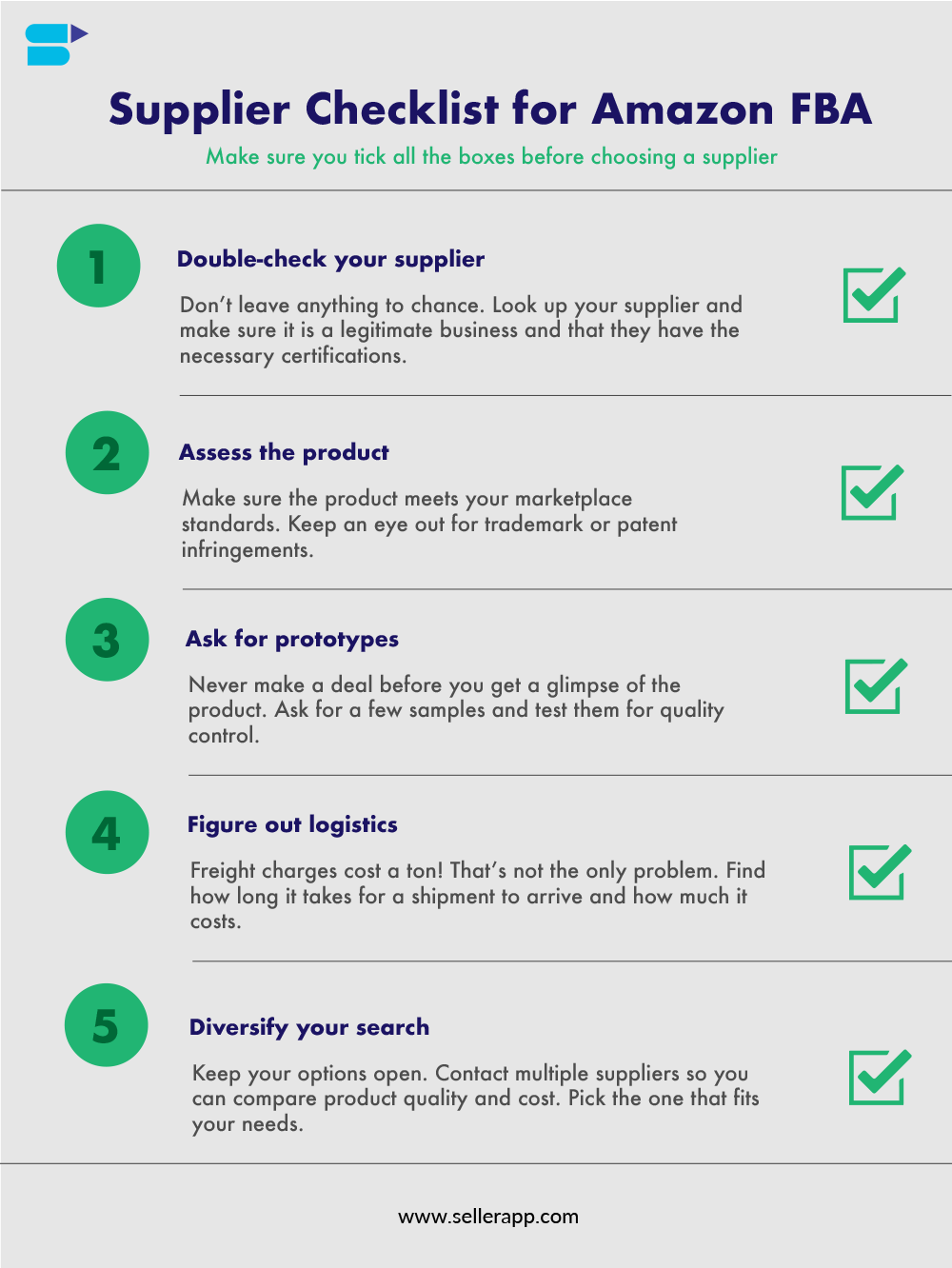
- Double-check your supplier
Just because a supplier is listed on Alibaba does not mean that supplier is reliable. So how do you verify that your supplier is the real deal? The best thing to do is to fly down to China and pay them a visit. This is not possible for every seller though. So, if you’re buying from Alibaba, always opt for trade assurance suppliers.
While trade assurance does offer safeguards and promises on-time delivery, it is always good to do a background check on the supplier. A simple Google search should give you an indication of whether it is a legitimate company. You should also check for the following details:
- Business License
- Location of the Supplier
- Ownership Status
- Photographs of the company’s operations
- Content Info
- Necessary certifications for the products
- Assess product quality and safety standards
Different marketplaces have different quality and safety standards, and not everything you buy from an overseas supplier will meet them. It is your responsibility to ensure that your supplier adheres to your local standards before sourcing the product. Also, keep an eye out for possible patent infringements. If there’s something wrong with the product, then it is money down the drain. You can use SellerApp’s Amazon Brand Registry to find trademarks as well as patents for products to avoid any mix-ups.
Safety regulations are harder to look out for, especially when it comes to complex products like electronics. It is up to you to make sure your supplier has the necessary clearances and safety certificates before you place an order.
- Find out how the product is made
If you’re looking to sell a product that is complex and difficult to make like electronics, it is worthwhile to figure out who is manufacturing them in the first place. This also means figuring out every minute detail of the product for yourself. In a competitive e-commerce platform, there is no room for mistakes when it comes to the quality of your listing. So make sure you test the product!
- Ask for prototypes
Always ask for a sample or a prototype of a product before you place an order. This will help you gauge whether the product meets quality standards. It will also help you assess whether it is a product that customers would buy in the first place. If you’re planning on starting a private label, you need to make sure the product meets your brand’s standards. A prototype will also help you get inputs from your friends and family about its viability in the Amazon Marketplace.
- Figure out the logistics
Shipping products from a different country may take time and also includes costs like freight charges that many sellers overlook. Make sure you factor in these additional costs before partnering with a supplier. You can check your product can be profitably sold with SellerApp’s Fulfilled by Amazon (FBA) calculator.
The cost isn’t the only factor you need to consider. Production of new items takes a while to set up. Find out how long it takes to produce the new item, and how long it will take to clear customs and reach your inventory. Running out of inventory can drastically affect your chances of winning the Buy Box, so this information is key to ensuring your success.
- Diversify your search
Never stick to just one supplier. When moving down this checklist, make sure you’re in touch with multiple companies. This gives you more options before making the final call. The costs and quality of the products can differ from one company to the other, so it’s recommended that you keep your options open before picking the one that suits your business needs.
After you find the perfect supplier, there are more decisions to be made. How do you ship the products? Who handles packaging? How can you ensure quality control? There are two options when it comes to getting your products from the supplier to Amazon’s fulfillment centers. You can either:
- Ship directly to Amazon FBA warehouses from the supplier;
- Ship the products to a middleman or yourself, before shipping it to Amazon.
Shipping directly to fulfillment centers
While many suppliers, including Chinese ones, are familiar with FBA specifications and guidelines, it is in your best interest to brief them. It is important that none of the key details are lost in translation, especially when you’re sourcing your products from overseas companies. So what are the pros of shipping the products directly to Amazon’s fulfillment centers?
- Quicker transit times: Shipping the products directly to Amazon will save you a lot of time. The quicker the product reaches a fulfillment center, the quicker you can start selling on Amazon.
- Reduced costs: By shipping directly to FBA centers, you can save money that you would otherwise have to pay a middleman.
Shipping directly to Amazon is not always the best choice to make, and has its own disadvantages:
- Lack of quality assurance: This is the biggest drawback while shipping directly to Amazon. You will not have an opportunity to assess the quality of your product when they go straight to the fulfillment centers.
- Packaging quality: Even if your product is top-notch, you still have to follow strict shipping and packaging requirements set by Amazon for FBA sellers. Any oversight from your supplier will directly hurt your bottom line.
Shipping to yourself or a middleman
You can choose to ship your products directly to yourself or a third-party middleman to ensure product and packaging quality. Following these checks, they can be sent directly to Amazon FBA centers. There are third-party services that’ll help you ship your FBA inventory. This does come at a cost. So what are the pros and cons of using middlemen or shipping the products yourself? Let’s start with the pros:
- Proper quality checks: You’re not at the mercy of your supplier in this case. After receiving the shipment from a supplier, you have the freedom to assess the products for defects and ensure proper quality control. You can then ship the goods to Amazon at your own pace.
- Protect business secrets: It’s never a bad idea to protect your business interests. Sometimes this means hiding your business strategies from your supplier.
What are the cons of shipping your products to yourself or using middlemen?
- Higher costs: If you’re paying a middleman to ship your products to Amazon, you’ll be paying them for it. If you’re doing it yourself, then it’s also a large time-sink.
- Longer transit time: If the product is not going directly to an Amazon FBA center, then it is going to take longer before you can update your inventory.
If this is your first shipment from the supplier, we recommend shipping the products to yourself or a third-party shipping service. Quality checks are vital when you’re starting your business. Unless you’re short on money, it’s always better to ensure quality control before putting up your product listing.
Local or overseas suppliers for Amazon?
Sourcing your products from local suppliers has its own benefits. It lowers the transit time, which ensures you get your product out early. It also helps you keep a close watch on product quality and ensures there is no miscommunication between you and your supplier. Chinese suppliers often end up being cheaper than local suppliers and at the end of the day, winning the Buy Box on Amazon can depend on thin margins. You also have to consider multiple factors like product cost, taxes, shipping times, and logistics before you finally take a call on your supplier. A successful Amazon seller always keeps their option open.
Conclusion
At the end of the day, it is up to you to figure out which supplier fits your needs. Make sure you go through the checklist to ensure that your supplier is legitimate and that your product is of the highest quality. There’s plenty of work to do even after you find the perfect supplier.
If you’re looking to kickstart your seller journey, check out SellerApp’s guide to selling on Amazon in 2022.
If you have any questions about sourcing your products, let us know in the comments section below!
Related Posts:
How Much Could Your FBA Business Be Worth?
Why should companies search for Amazon FBA alternatives?



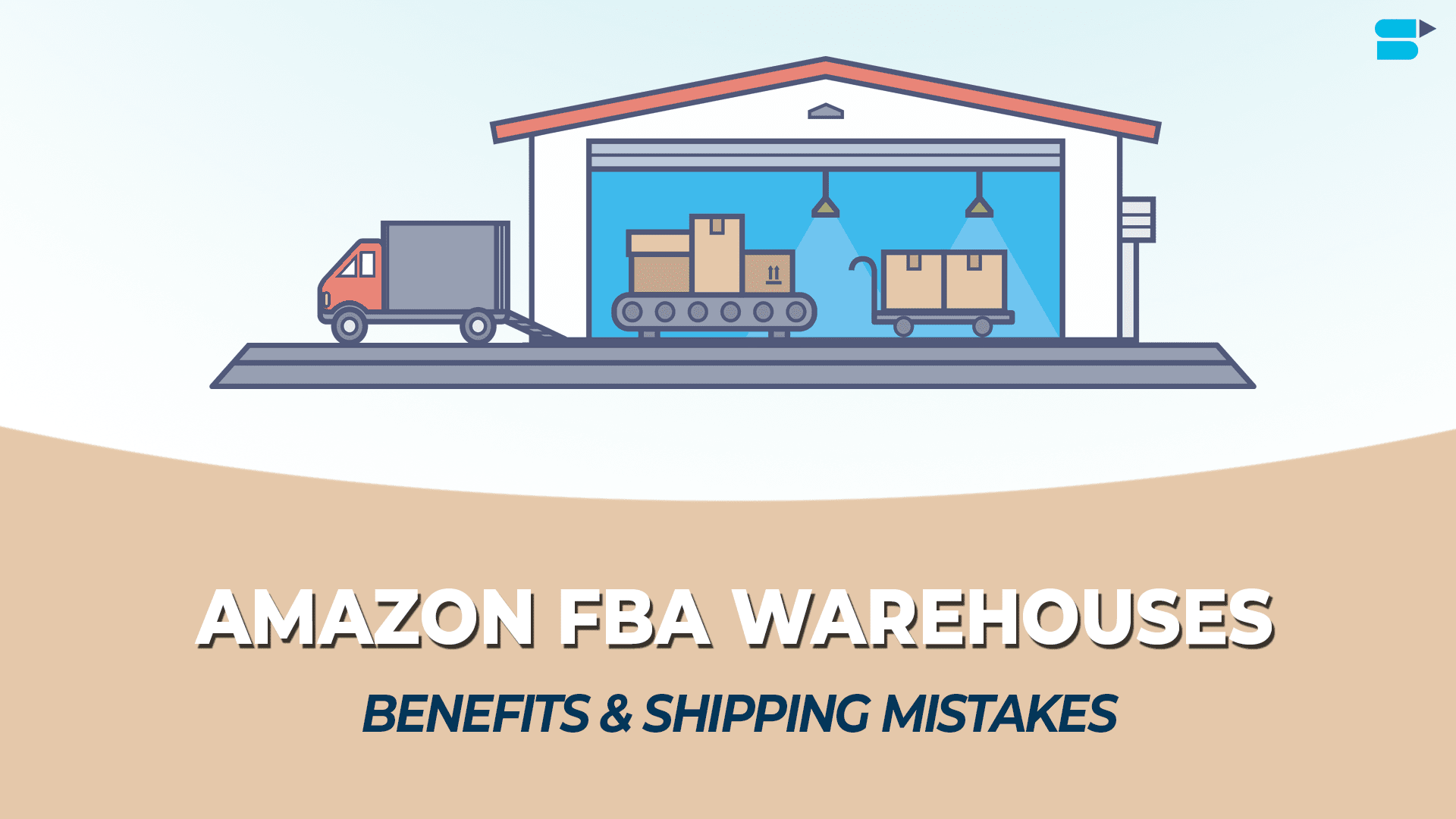
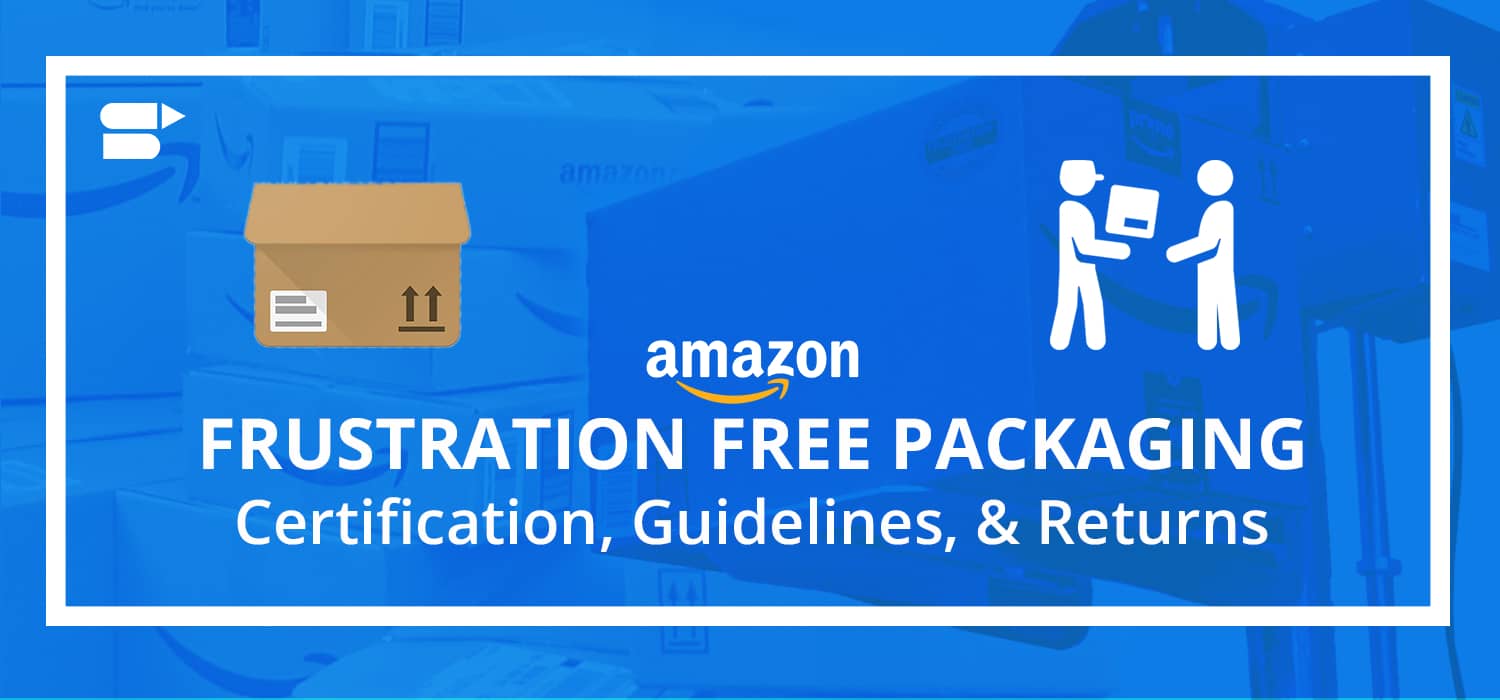
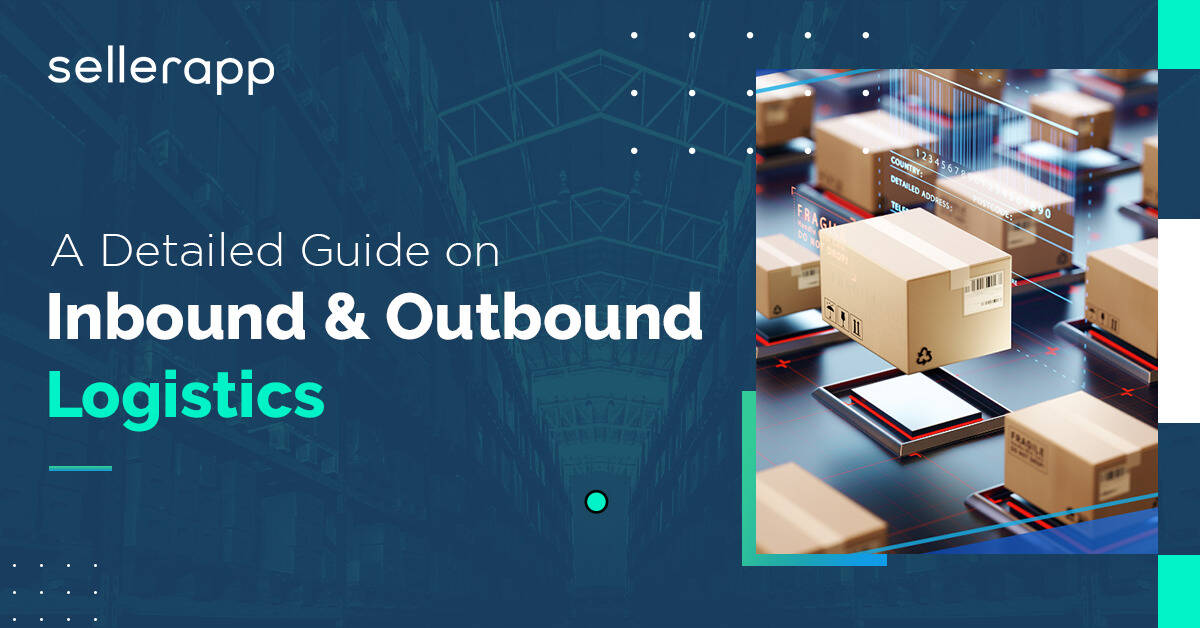
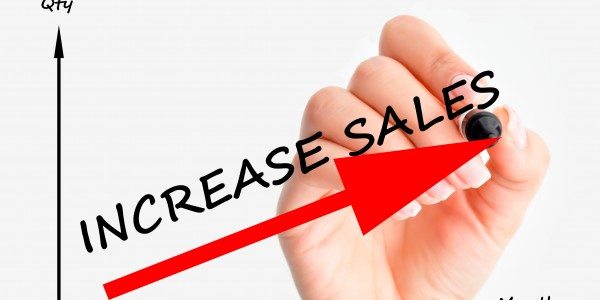
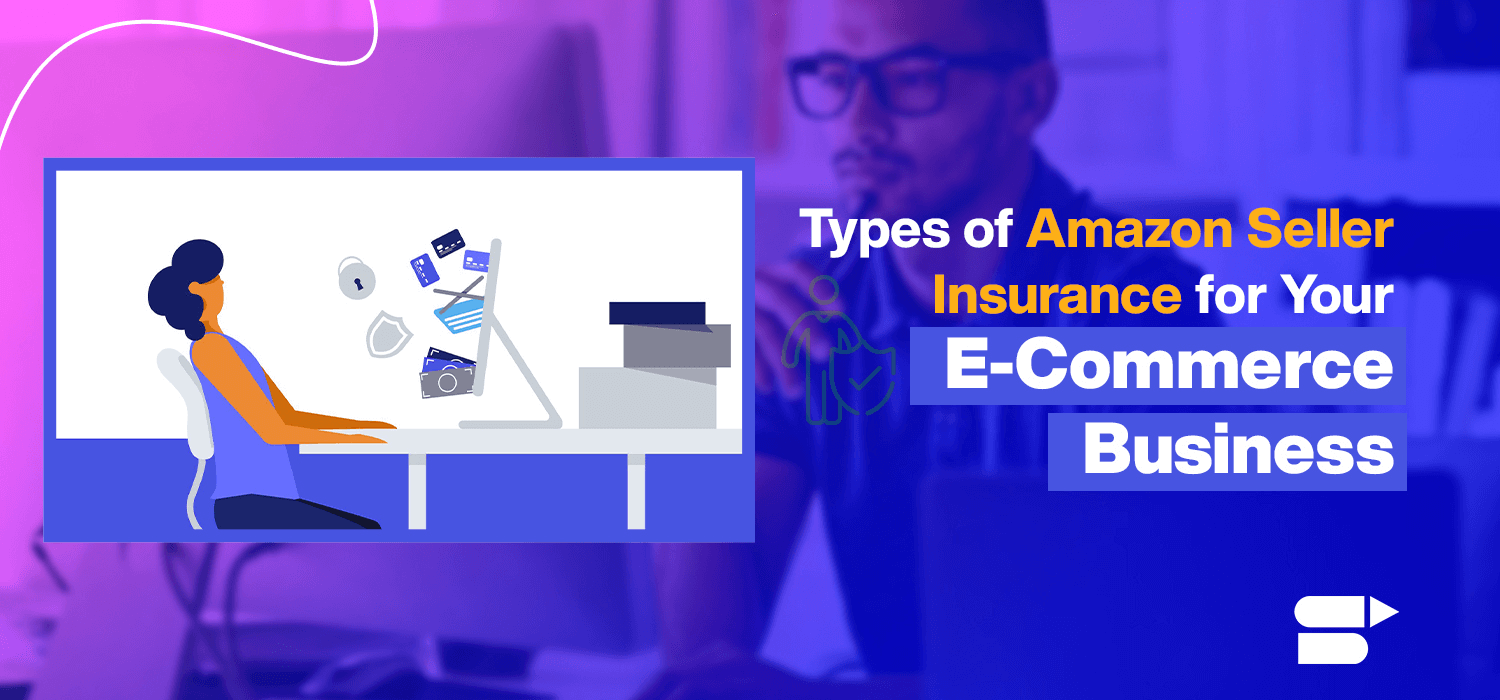
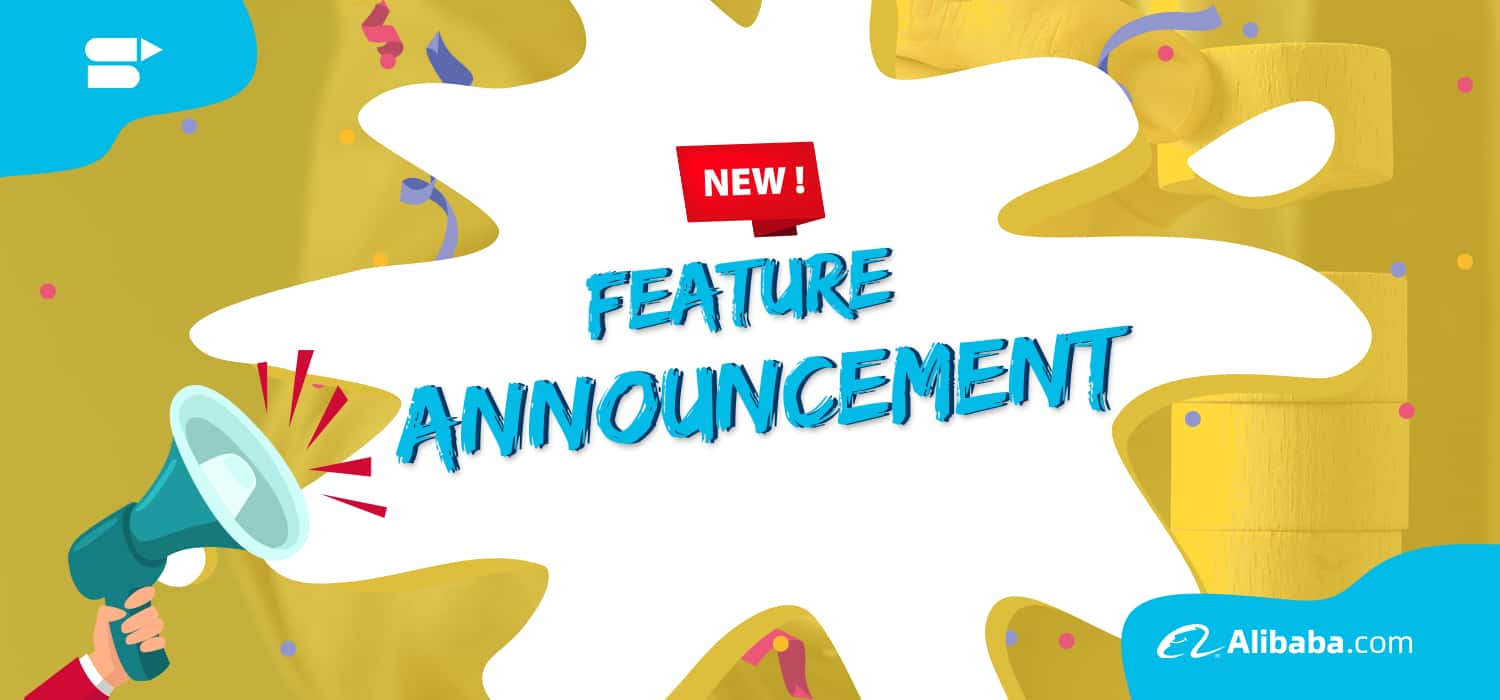

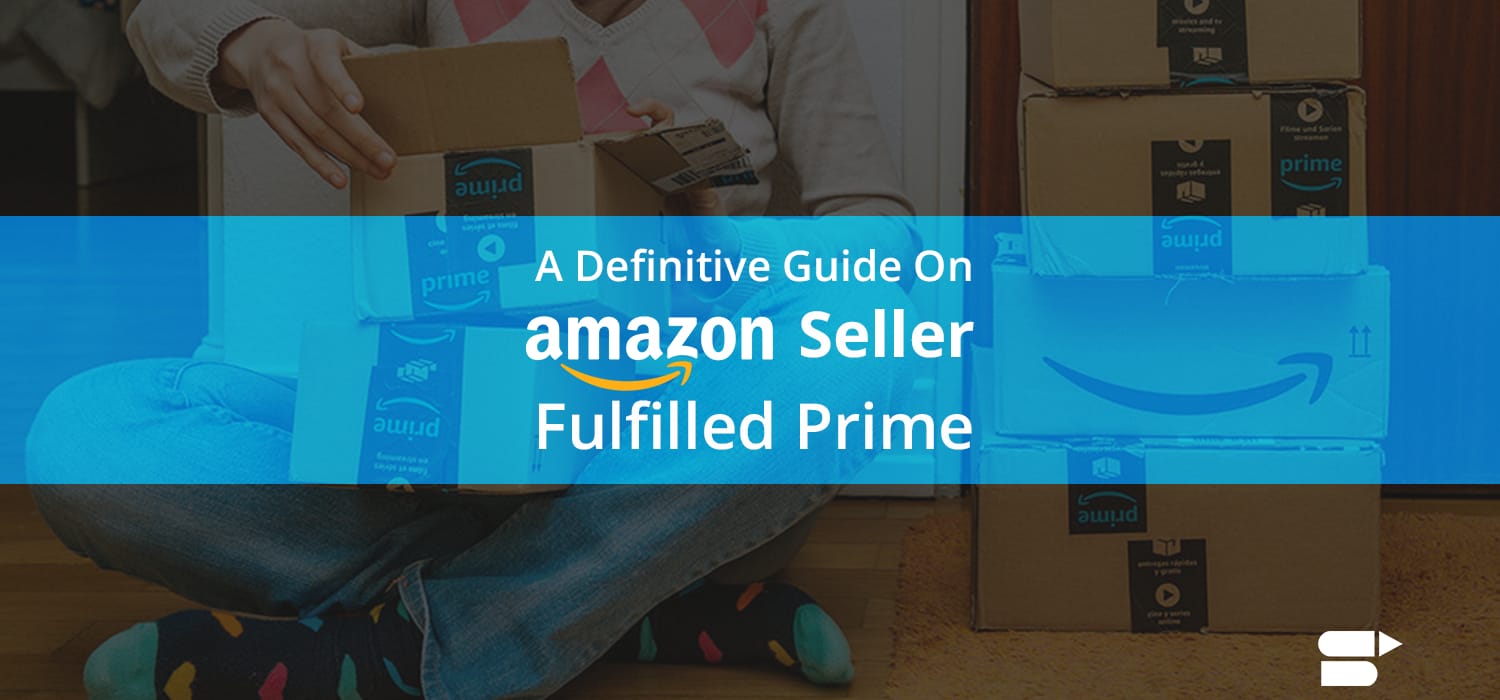
Marissa Larmett
February 25, 2021What could possibly be the safety regulations to take into consideration for electronic products?
Arishekar N
August 9, 2021Safety regulations for electronics are harder to look out for. You have to make sure that the necessary clearances and safety certificates are available with your supplier before you before you place your order as it is very important.